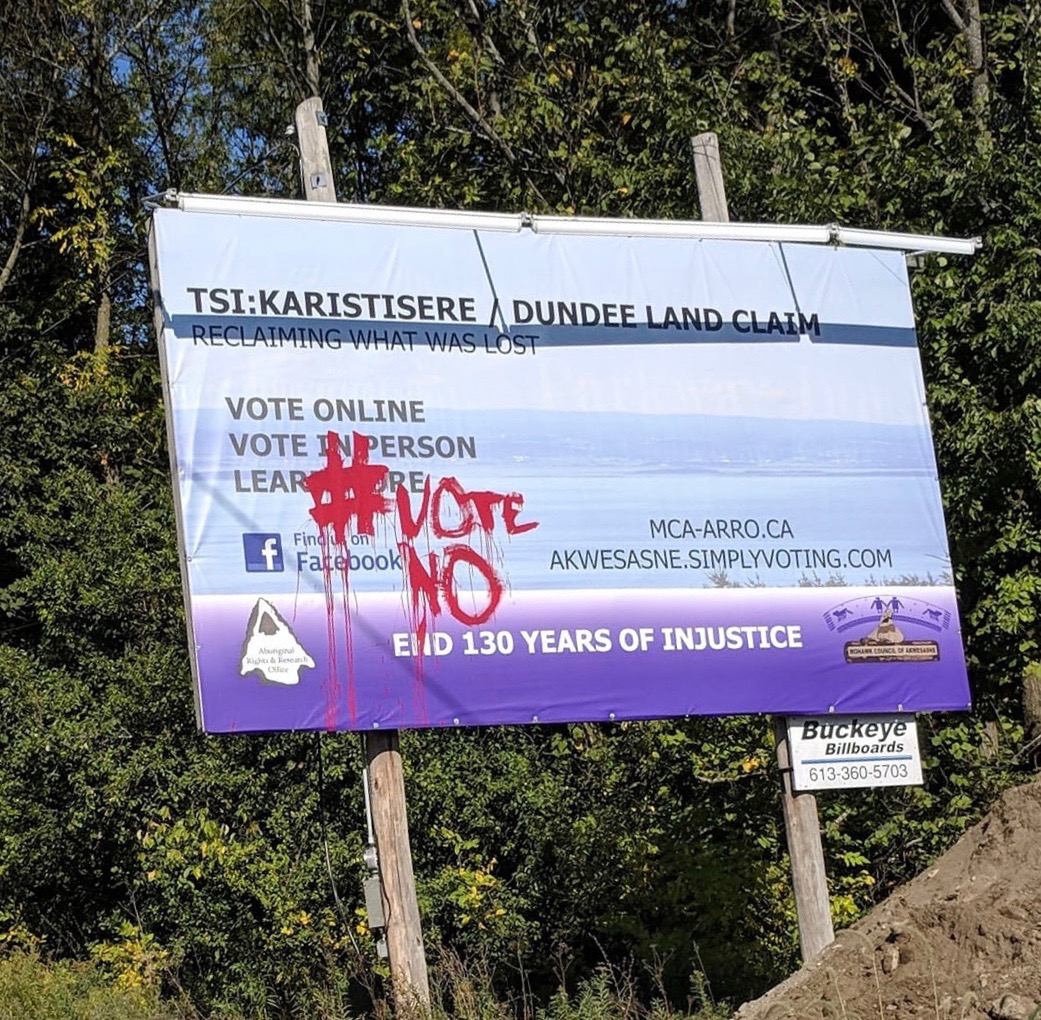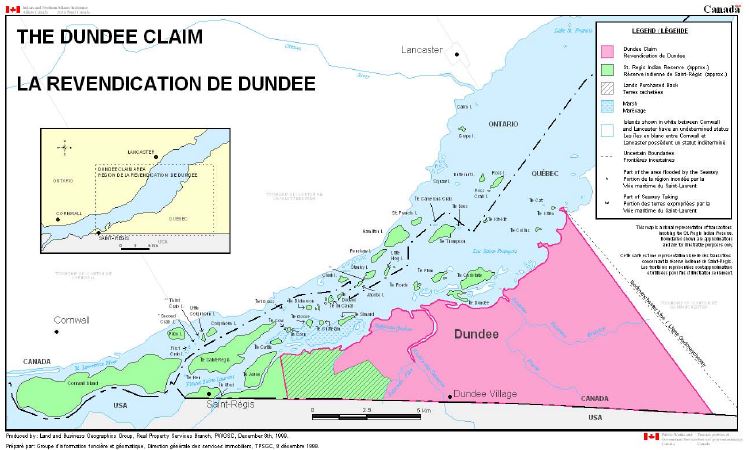On a cold Saturday in December, Akwesasne residents, 2,197 to be exact, casted their ballots in the Tsi:karistisere/Dundee land claim settlement referendum. With four voting stations set up throughout the Akwesasne Mohawk Territory, polls opened at 9:00 a.m. on December 8th, and closed at 5:00 p.m..
Referendum results were ready around 7:30 p.m. that same evening.

According to a press release issued by the Mohawk Council of Akwesasne(MCA), 1,749 residents voted yes to the $240 million settlement, while 448 voted against, representing 28% of the 7,818 of total eligible voters. That percentage was tough to come by – a sentiment that was shared by the Grand Chief of the Mohawk Council of Akwesasne, Abram Benedict, post referendum. “The required 25% of eligible voters comes as a challenge to our community given the size of our territory, but our commitment continues to take precedence.â€
The settlement offer, $239,808,436 to be exact, is for approximately 8,000 hectares of land now in the Township of Dundee, located in the most western portion of Quebec.
“The Mohawk Council of Akwesasne has vested a significant amount of time into bringing the claim to a position of a proposed settlement. Many current, previous Chiefs, Grand Chiefs and Technicians have worked very hard on this, and the positive affirmation received this past weekend only solidifies their commitment to bring this to a close,” said Benedict.
Unofficial Results
Although the ballot question has been considered approved by the Chief Electoral Officer, Leona Benedict, there is a five-day waiting period for appeals to be heard. MCA Grand Chief Benedict says, “following the appeal period, the Mohawk Council of Akwesasne will execute the final agreement and begin the next stage of community engagement on implementation.† If the final stages of the process can be ratified, the Mohawk Council of Akwesasne may have the ability to purchase up to 7,400 hectares of land from willing sellers in Quebec and Ontario.

A Quick Historical Review:
. Akwesasne has continually protested the “alleged surrender” of Tsi:karÃ​stisere since 1888.
. In the late 1700’s surveyors began measuring off the eastern most portion of the Akwesasne Territory with survey chains —  it soon became referred to as Tsi:karÃ​stisere, the Mohawk to English translation is “the place where the metal chain has been dragged.”
. After 1812, non-native settlers made lease agreements with Akwesasne leadership to rent parcels of land. At that time, it was a way for the community to make revenue for a growing Akwesasne.
Between the 1800’s to the 1900’s, more and more settlers signed leases — with some ranging from just a few years, while others were for as long as 999 years.
. There came a point when Akwesaserónon went to Tsi:karÃ​stisere to collect lease payments and they were accused of trespassing. It was around that time that the Dundee land settlers petitioned Canada to seek a land surrender by Akwesasrónon.
. Continued disputes and issues between the lessees and Akwesasrónon resulted in a federal inquiry in 1887. The number of settlers who gave testimony in the investigation was over 100 compared to that of a handful of Akwesasne residents. An alleged surrender was signed on Feb. 16, 1888.
. In 1981, the Mohawk Council of Akwesasne presented the Tsi:karÃstisere/Dundee Land Claim to the Government of Canada. The claim was first accepted for negotiation in 1988 under the specific claims policy.
. A revised claim was presented in 1998 and accepted for negotiation in 2002. In April 2015, the Government of Canada made a global settlement offer of $239,808,436 for a full and final settlement of the claim. The offer was based on a careful consideration of the facts, evidence, and arguments of the Mohawk Council of Akwesasne and the Government of Canada.
. Following the settlement offer, the parties have continued negotiations on the terms and conditions of a Final Settlement Agreement. In addition to the compensation that will be paid by the Government of Canada, the Mohawks of Akwesasne will have the opportunity to expand their lands by adding up to 18,282 acres of land under Canada’s Additions to Reserve (ATR) policy.
There is a well produced video on YouTube that gives an interesting brief history and background on the Tsikaristisere/Dundee Land Claim. It can be found at – https://youtu.be/bde_8W4bALI
By: Regan Jacobs, Executive Producer, Akwesasne TV.
Sources: Mohawk Council of Akwesasne


